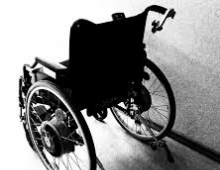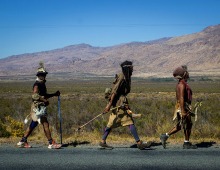Marcus Toerien
The passing of struggle stalwart John Nkadimeng earlier this month, prompted the writer to reflect on his role in the return to his homeland of Salt River born Ronald Herboldt after some 40 years as a Cuban army officer.
The life and times of John Nkadimeng who died and was laid to rest earlier this month, in its many iterations from young union activist in the tobacco industry to veteran diplomat, will reverberate through the ages.
It was Nkadimeng who, as South African ambassador to Cuba in 1998, made possible the return to his homeland of Ronald Herboldt.
And because of Ronald’s return to South Africa, after some 40 years as a Cuban army officer, we have more insight into the events that shaped the beginning of the end of apartheid South Africa’s occupation of Namibia.
His part in ending South Africa’s war of destabilisation in southern Angola and the cessation of hostilities on the Namibia-Angola border paved the way for Namibian independence, and led ultimately to the end of National Party rule.
Sadly, it is Ronald‘s death in Cape Town in 2007 that makes it possible to speak of some of these things now because he swore me to silence all those years ago, even as I worked to prise his life story out of him.
Herboldt was a ‘coloured’ South African who hailed from Salt River and whose future came to be bound up with the Cuban revolution. His life story is captured in Idol Pictures’ Jack Lewis and Lucilla Blankenberg’s documentary Brothers in Arms; the ‘brothers’ being Ronald and his eldest brother who’d served in the SA Navy at the same time as Ronald had been deployed to Angola.
In December 1958 when it sailed from Cape Town Ronald was a 21-year old quartermaster aboard the Safmarine dry cargo vessel SS Constantia. The vessel berthed at Guayabal in the south-western Cuban province of Camaguey. Not quite a port, Guayabal was then just a sliver of land jutting into the sea, with quays that served as cargo terminals.
While docked, the sailors were let off the ship in small teams by the captain. Their time onshore was spent doing what many sailors do when in foreign ports: they carouse the local bars, and maybe chat up the local women.
But as the end of the year approached news abounded that the dictator Batista had fled and the rebels’ descent from their bases in the Sierrra Maestra mountains was imminent. And so it was that on New Year’s Day 1959, the rebels swarmed the town, welcomed by the crowds. As the Fidelista’s swarmed the barrio’s streets, Ronald was in the swirl of locals that thronged to greet them.
Most of his mates returned to the ship when they had to, but Ronald hung around. It would appear that Ronald was somehow swept along in the revolutionary fervour and the rebels’ march on Havana.
Years later, in Salt River, I was introduced to an old man who remembered Ronald and we speculated about why he would choose to remain in Cuba all those years ago. ‘Hy was net ‘n laaitie man, hy’t guns gelike’, he mused then.
It was former SACP activist Vishwas Satgar who first alerted me in 1997 to Ronald’s existence and his fascinating revolutionary experience. He’d come to learn of Ronald from a trip to the island nation arranged by the Friends of Cuba society at the end of 1994. Nearing 70 years, Ronald was retired with only a very small military pension.
I established communication with Ronald and early on a summer evening in 1997, I obtained permission from my employers, the Centre for Democratic Communications (CDC) to place a call to the SA embassy in Havana. The Cuban capital is six hours ahead of Johannesburg.
I hadn’t expected to speak to Ambassador Nkadimeng, just to someone at the embassy who knew about arrangements for the SAAF flight that was occasionally scheduled between AFB Waterkloof and Havana. Could we get Ronald onto the flight? Over the phone I heard whoever answered mention Ronald’s name, and then mine. A few seconds later Nkadimeng’s voice greeted me, ‘Buen día, or do you speak Afrikaans?’
He secured permission for Ronald to board the flight from Havana, accompanied by his wife Marta Rangel Sandoval. They arrived at Waterkloof and spent the night at a local Pretoria hotel. The film crew and I arranged that we travel ahead of him to Cape Town where we would film what we reckoned would be an emotional family reunion. It was that, and more.
There’s an image I will take with me to my grave. Cameraman Lance Gewer and I, the sound recordist Cassim Shariff and Ronald traipsing around Ronald’s old haunts in the Salt River streets below Main Road.
We stopped at a narrow, ochre-stuccoed semi-detached house Ronald pointed out after we’d made inquiries at other homes on the street. I motioned Ronald and the crew to wait on the sidewalk while I knocked at the door. An elderly but stately, gedoekte woman answered. She returned my greeting and inquired after my business. Her deliberate speech revealed a mouth of gold fillings, and hands that suggested a lifetime of hard work.
I told her there was someone on the sidewalk who was too shy to approach her. I spoke in Afrikaans but maybe my accent betrayed me because she answered in English. She must have fingered me for a slimmetjie who didn’t usually speak the language.
She stepped forward gingerly from her stoep onto the short cement pathway to the iron gate with chipped white paint, craning her neck forward suspiciously all the time. When she saw Ronald she gasped for a moment and then clasping her hands to her cheeks, exclaimed in, what?…disbelief ‘Haai, Ronnie, is it you, is it really you?’
She must have repeated this ten times, glancing at him and then at me. Then she stepped forward and took his face in her hands.
‘Yes, Marildiah, it really is me.’
We got it all on camera. Tears flowed. Mine too.
The upshot however was that I never got to make that film. My own efforts as a rookie filmmaker to raise the money to produce the documentary floundered. Fortunately, Lucilla and Jack stepped into the breach, and set to work. Brothers in Arms was the outcome.
In the course of knowing him Ronald told me of many things I guessed his revolutionary and military discipline, and maybe his modesty, would not permit him to include in a story about his life then.
Ronald knew Afrikaans. In Angola he was deployed to a communications interception detachment, monitoring radio chatter of both SANDF ground forces and the SAAF bombing sorties overhead. He’d hear the SA officers curse in frustration as oftentimes their plans were thwarted because the Fapla-Cuban forces gained advance knowledge of their movements.
Some 32 years ago in May 1988, Johan Papenfus, a SADF 101 Batallion lance-corporal was injured in a skirmish with Angolan and Cuban forces at Donguene, near Calueque in southern Angola. A Rifleman J Petrus, died in that contact. Tragically, his remains were never recovered.
Captured, Papenfus was casevaced from the combat zone, to Havana’s Hospital Hermanos Almejeiras, where he was treated for his injury. I was told – subsequently confirmed – that he’d had part of his buttocks shot away and required reconstructive surgery.
Ronald told me that he was summoned back home to Cuba from his Angolan rear base while Papenfus was recovering. In the hospital a tense situation was unfolding. One of the therapists in the hospital assigned to work with Papenfus on his recovery – an officer in the army medical corps – was deemed to be getting too close to the PoW. A CCTV camera was installed in the ward, and Ronald’s orders were to observe them.
Papenfus’ parents and sister were due to visit him in hospital in Havana. Fearing he could pass on information about the Cuban military to them that may have been communicated to him by the therapist, Ronald’s superiors ordered her removed. She was later court-martialled.
In March 1989, some 10 months after he’d been injured, Papenfus was led across the Angola-Namibia frontier at Ruacana. Waiting for him were the foreign minister (and mineral and energy affairs minister in the first democratic cabinet) Pik Botha and defence minister Magnus Malan, his parents and his sister. Papenfus was being returned as part of a PoW swop that also saw SA and Fapla-Cuban forces withdraw from the frontier. Watching through a pair of binoculars from the Angolan side of the border as part of the detachment of Cuban officers serving in the Joint Military Monitoring Commission (JMMC), was a Ronald Herboldt.
The Cubans never disclosed Ronald’s origins to their South African counterparts in the JMMC.
Many years later, in the ‘noughties’, I bumped into Pik Botha at the SABC. Following the death of his first wife he was remarried, to SABC staffer Ina Joubert. Pik was at Ruacana the day the PoW exchange took place. But he was unaware of Ronald and his presence there that day.
I asked Pik if he had a moment to chat.
‘Ja, of course,” he assured me. As he steered me to the table of refreshments I asked ‘Do you remember Ruacana, in 1989?’
He raised his eyebrow quizzically. ‘Remind me,’ he ventured slyly.
‘Herboldt. Ronald Herboldt?’ I asked.
He shook his head slowly, frowning.
‘When Johan Papenfus came back. He was there,’ I said.
I proceeded to tell him. At the end of it he swung his head slowly from side to side. ‘My word,’ he said.
Maybe he was having me on and had known all along. All the same, I’m glad I got to tell him that before he passed away.
On and off over the years I ‘ve tried to trace Johan Papenfus to hear his account of events, most recently when Pik Botha passed away in October 2018. I think there’s another chapter in the story waiting there.
I learnt of Ronald’s death from former student activist Jonathan de Vries, who had worked with Lewis and Blankenberg to produce Brothers in Arms.
When I’d expressed my shock and sadness after he told me, Jonathan said: ‘Life’s like that. Sometimes you know when your life’s work is done, and you’re happy. You don’t feel a need to hang around.’
It can take a lifetime to learn some truths, and sometimes a life must run its course before some secrets can be revealed. For me, it was left to Jonathan to point out that Ronald could have come home long ago. But because he was so unassuming, so selfless and committed to the course his life had taken, he never pursued it himself.
Ronald often expressed to his fellow Cuban army officers his desire to be able one day to visit South Africa again. In southern Angola he’d joke with them: ‘It’ll take me a few days , but I can walk home from here.’ And even though he had access to high-ranking officials in the military and government, he never took up their urging to broach the matter directly with Fidel himself.
Ronald Herboldt’s legacy will echo still many generations from now. It’ll be thanks in part to John Nkadimeng.










